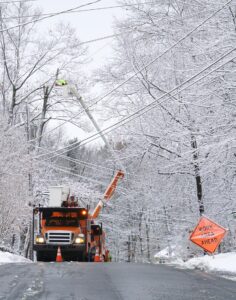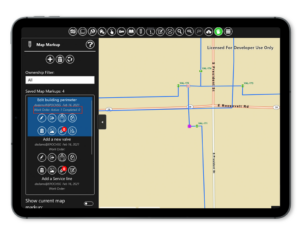Utilities and telecommunications companies have been under pressure to digitize in order to remain competitive and support the mobile workforce for many years. For too long, the norm for field operations has revolved around paper-based processes, physical maps, and duplicate data views. Of course, the pandemic has forced many companies to re-evaluate their technology landscape and re-examine the impact of technology-driven solutions on a remote workforce. But the years following COVID-19 have proven that nearly anything can be streamlined and digitized with the proper technologies in place.
The efficiency gains and cost savings to be had from digitization are too great to ignore. This is especially true for field operations. In order to overcome barriers – both internal and external – it’s critical that organizations have a comprehensive project plan that addresses the varied elements needed for successful digitization. Preparing for digital transition of field operations is a process and one that should have a set of measurable milestones and results from the outset. Executives also need to engage with their teams to understand the challenges fieldworkers face and work with them to find solutions that make sense for both sides.
If you’re looking to transform your field operations into the next phase of digital execution, here’s a checklist your team can use to ensure the transition to digital management is smooth and results in more effective, efficient operations:
- Understand the business case for upgrading to digital tools. Lay out the short-and long-term goals and align digitization plans to them to ensure priority work is transformed first.
- Assess your current state and identify areas of improvement. Conduct a thorough audit to identify the most pressing challenges that digitization will address and develop a roadmap to the ideal operational state.
- Develop a plan to implement digitization in a way that makes sense for your organization. Form a task force for the transition and include team staff members who will be working directly within the digital systems; comprehensive involvement gets everyone engaged and focused on the same goals from the start.
- Train and equip your field workers with the tools they need to be successful. Identifying early adopters to champion training, celebrating learning steps, and acknowledging change management wins will help keep teams motivated.
- Monitor and optimize your digitization efforts over time. Schedule regular evaluations aligned to planning, implementation, and execution milestones to course-correct or leverage successes throughout the system.
- Work with an implementation partner that can help you assess your organization’s needs and ensure the best roadmap with the least interruption. Make sure your partner offers configurable solutions that solve the unique challenges your teams face every day, from the back office to the frontline. Also, ensure you’re getting increased visibility and productivity in every part of the process.
Each of these steps is important in achieving success with digitization in field operations, but it’s also important to keep in mind that every organization is different and will have its own unique challenges and needs.
You know it’s time to update your process, but where do you start? Learn more about how to get your operations ready – download our latest guide: Digitization in Mobile Workforce Management: Overcoming 5 Barriers in Field Operations now.
























